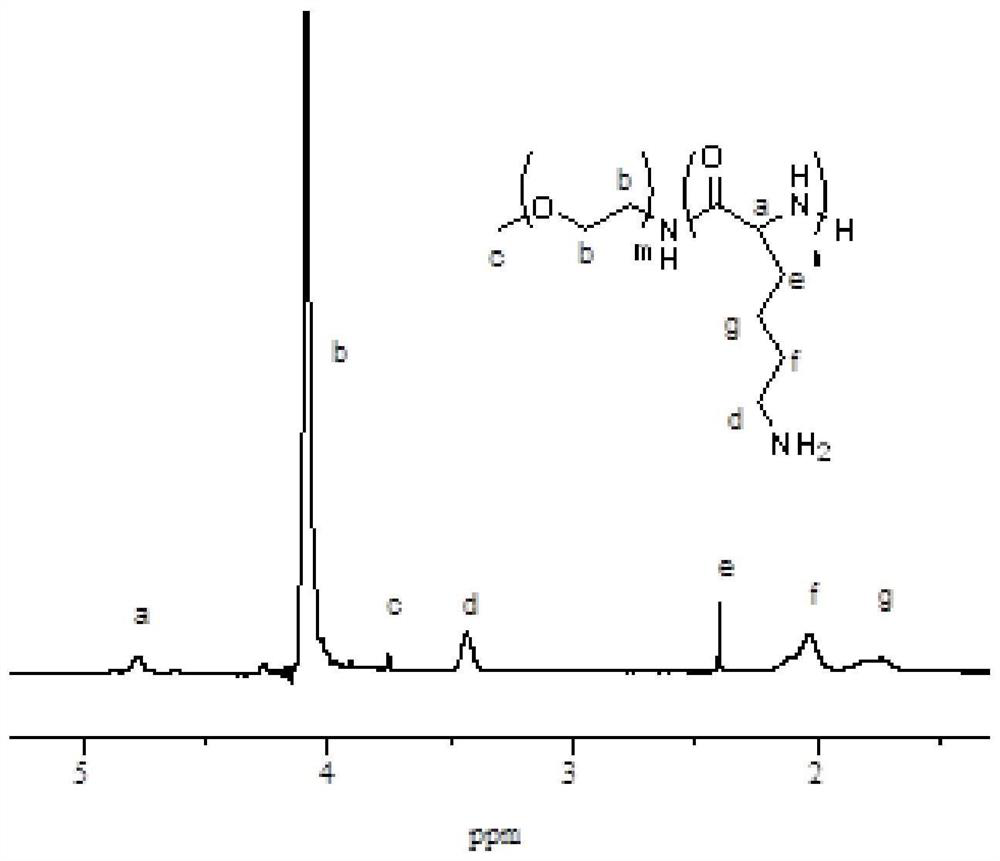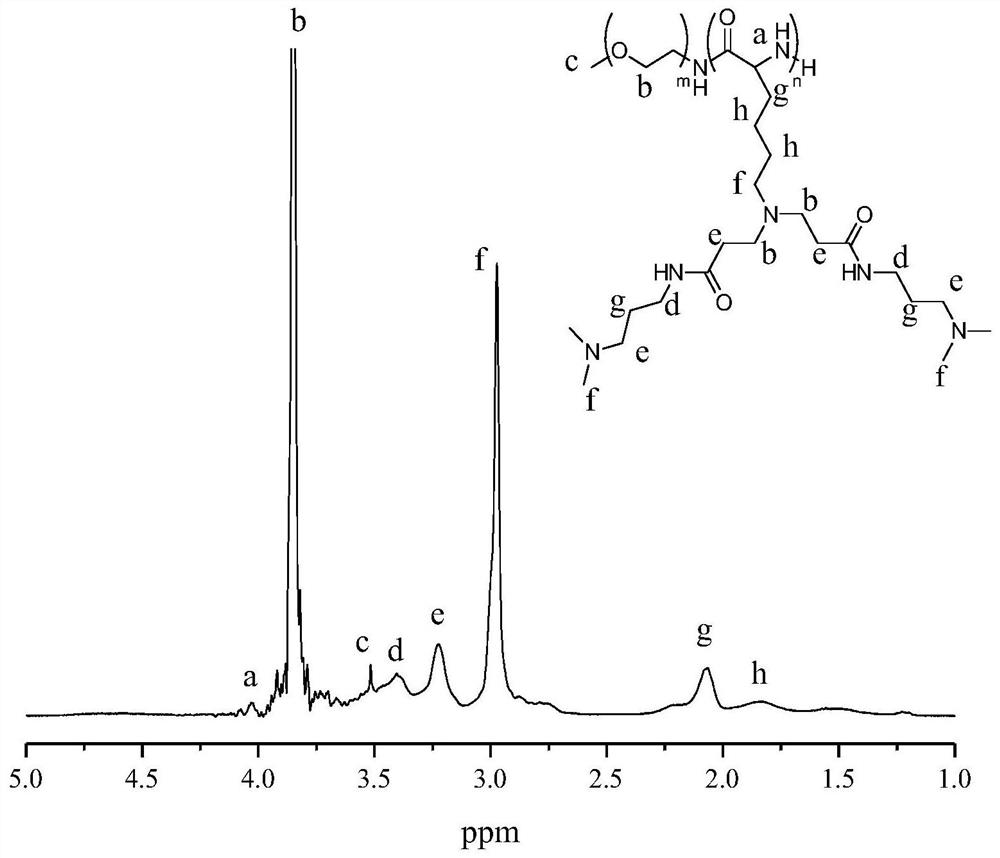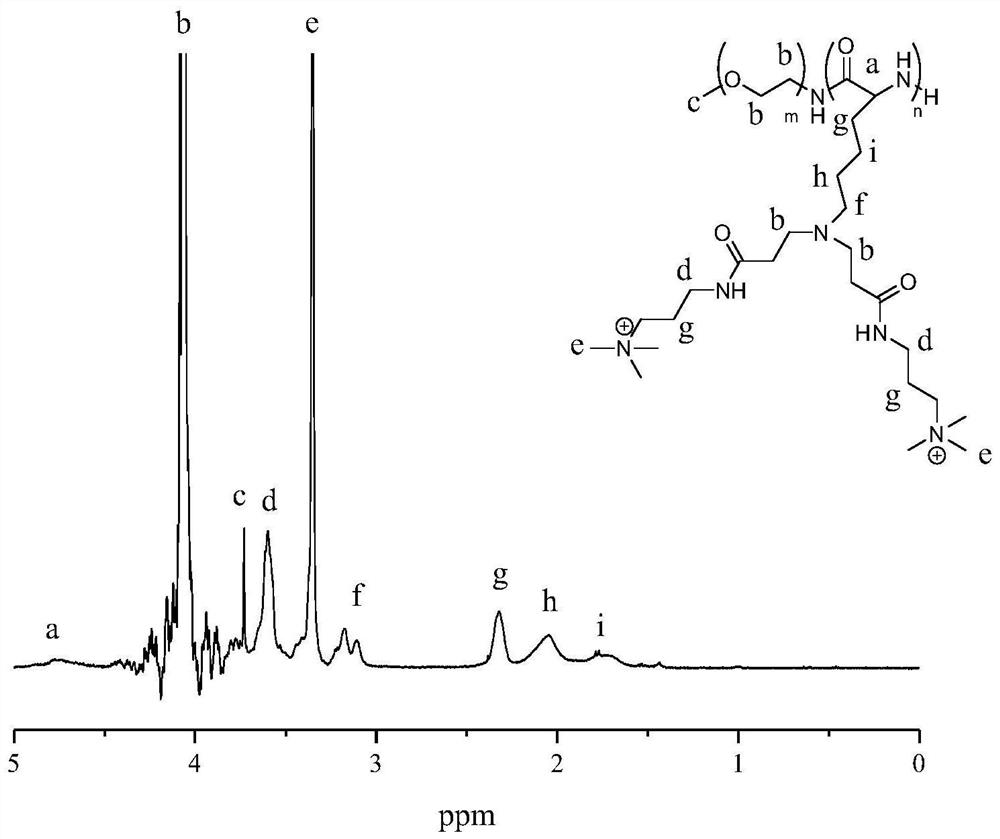A kind of cationic polymer and its preparation method and application
A polymer and copolymer technology, applied in the field of cationic polymers and their preparation, can solve the problems of insufficient protonation buffer capacity, difficult drug and gene release, and lack of endosome destruction ability, and achieve good biocompatibility and Biodegradable performance, good transfection effect, easy to popularize effect
- Summary
- Abstract
- Description
- Claims
- Application Information
AI Technical Summary
Problems solved by technology
Method used
Image
Examples
Embodiment 1
[0046] Add 0.2g polylysine (number-average molecular weight: 1500) and 0.01g potassium hydroxide to the reaction flask, add 8 mL of acetonitrile / distilled water (v:v=2:1) mixed solvent and stir to dissolve; then add 2,3-cyclo Oxypropyltrimethylammonium chloride (0.49g, the molar ratio of it to lysine residues, that is, the reaction equivalent ratio is 2:1) in ethanol solution, reacted at room temperature for 12h; after the reaction, the reaction solution was dialyzed After freeze-drying, the cationic polymer was obtained.
Embodiment 2
[0048] 0.45g polyethylene glycol-polylysine copolymer (polyethylene glycol number average molecular weight is 5000, polylysine number average molecular weight is 2560) and 0.02g sodium hydroxide are added reaction flask, add methanol / distilled water ( v:v=3:1) mixed solvent 12mL stirred and dissolved; then added (3-dimethylaminopropyl) acrylamide (0.58g, its molar ratio to lysine residues, that is, the reaction equivalent ratio was 3: 1) was reacted in methanol solution under ice bath for 24 hours; after the reaction was completed, the reaction solution was dialyzed and freeze-dried to obtain a cationic polymer.
Embodiment 3
[0050] Add 0.45g of polyethylene glycol-polylysine copolymer (the number average molecular weight of polyethylene glycol is 5000, and the number average molecular weight of polylysine is 2560) and 0.025g of sodium hydroxide into the reaction flask, add 12mL of tetrahydrofuran and stir to dissolve ; Then add (3-acrylamidopropyl)-trimethylammonium chloride (0.77g, its molar ratio with lysine residues, that is, the reaction equivalent ratio is 3:1) methanol solution, under ice bath React for 2 hours, and then react for 48 hours at room temperature; after the reaction, the reaction solution is dialyzed and freeze-dried to obtain a cationic polymer.
PUM
 Login to View More
Login to View More Abstract
Description
Claims
Application Information
 Login to View More
Login to View More - R&D
- Intellectual Property
- Life Sciences
- Materials
- Tech Scout
- Unparalleled Data Quality
- Higher Quality Content
- 60% Fewer Hallucinations
Browse by: Latest US Patents, China's latest patents, Technical Efficacy Thesaurus, Application Domain, Technology Topic, Popular Technical Reports.
© 2025 PatSnap. All rights reserved.Legal|Privacy policy|Modern Slavery Act Transparency Statement|Sitemap|About US| Contact US: help@patsnap.com



